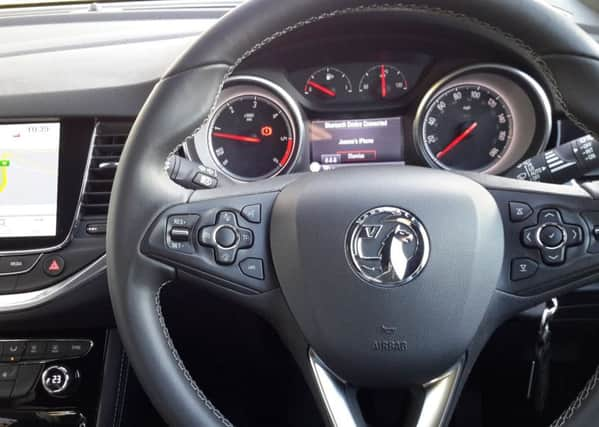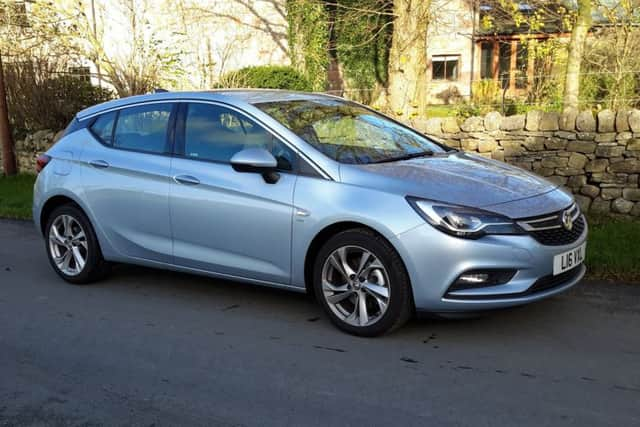Seventh Astra something to shout about


Volume car production in Scotland ended with the Hillman Imp in 1976. Perhaps in the brave new world of Scottish devolution a motoring renaissance is due? So far, the Japanese have ignored the opportunity. This leaves Vauxhall as the major producer of a car with a traditional English badge – though for some 90 years it has been part of America’s GM and takes its lead and most of its cars from Opel, with factories in Germany and Spain.
This week’s test car, the Astra, is made with a lot of pride in Ellesmere Port, Cheshire, which is the lead plant for the Astra production. It opened in 1962 and since 2004 has been Vauxhall’s only car factory in Britain, though it still makes the (fabulous) Vivaro van in Luton. Half its Astra production is exported into Europe, securing 2,000 jobs for years to come.
Advertisement
Hide AdThe Cheshire factory makes the five-door Astra hatch and, next year, will make the Sport Tourer estate. The hatch is sold in 25 European markets and the estate is sold in many other countries. The factory output passed the five million mark last year, comprising two golden oldies, Viva and Chevette, and six generations of the Astra.


Today’s 7th Astra is brand new, replacing the 2009 model. Out goes the softly curved body, in comes, a much more sharply, styled car to match the beaky-edged shapes of rivals like the Ford Focus, Hyundai i30 and Seat Leon.
New features are LED headlights which automatically adjust, by switching off beams, to avoid dazzling other drivers. It also launches with the company’s OnStar, which combines with your phone to provide assistance, wi-fi, automatic crash response and help tracing the car if it is stolen. This is standard on the SRi and Elite versions.
This Astra, like its peers launched in the past few years, has been on a diet. It is as much as 200kg lighter than the last Astra – now revealed as the fatty in the pack – with 77kg coming off the body shell. Another 50kg is saved by using lighter and stronger steels in the chassis. Its petrol and diesel engines are all new-generation and range from 99bhp to 198bhp. They include a 1.4-litre, 148bp direct injection petrol turbo and the recently launched 1.6-litre CDTi “whisper” diesel. In November it picked up Germany’s prestigious Golden Steering Wheel Award as best compact car. Scottish motoring writers have just picked it as their outright winner of the year.
Prices start at £15,295 for the 99bhp 1.4 petrol Design. The cheapest automatic is the one-litre 104bhp petrol turbo Design Easytronic at £16,395. Diesels come in from £16,995 for the 109bhp 1.6 CDTi Design, with automatic from £19,500 for the 135bhp 1.6. Other trim levels are Tech Line from £15,995, Energy from £17,295, SRi from £17,895 (all for the 99bhp 1.4 petrol) and Elite from £19,315 with the 104bhp one-litre petrol turbo. The 109bhp 1.6 diesel is rated at 91mpg and 82g.
Tested here is the SRi Nav with the 134bhp (136ps) version of its 1.6 litre CDTi “whisper” diesel with a six-speed manual gearbox. It is rated at 103g and 72.4mpg on the combined cycle. Top speed is 127mph and the 0-60mph time is nine seconds. With “flip chip” silver paint it costs £21,480. The price includes OnStar, racy 17-inch alloys, sports front seats, a sports switch to hone up the controls, navigation, auto lights and wipers, forward crash warning, tyre pressure monitoring, air-con, cruise control and speed limiter. The LED lights added £995 and climate control was £395.
Advertisement
Hide AdThe SRi badge denotes sporting pretensions and this means accepting quite a lot of suspension thud and roar through the 225/45 Michelin Primacy tyres. A less sporting tyre profile would improve things. I liked the systems information which, for example, gives a coloured guide to driving economy, oil life, tyre pressures, the air con’s fuel consumption and braking time to the car in front. The controls are neat, with some touchscreen functions and smaller than average engine and road speed dials easily read.
The whisper diesel was noisier than expected. However, it pulled well and returned a motorway average of 66mpg and a 57mpg average on a typical commuter run.
Verdict: A winner, let down on this example at least by noise from the tyres, suspension and engine.